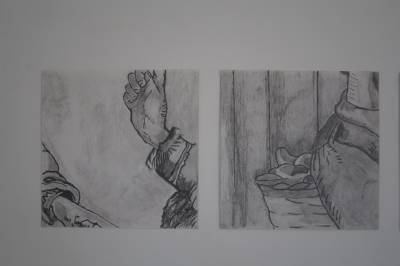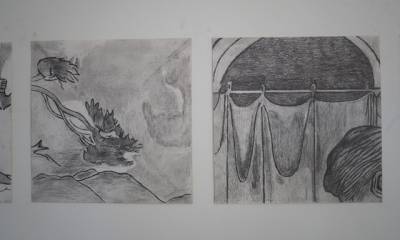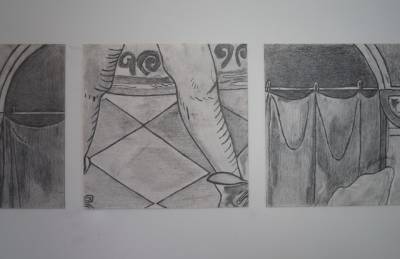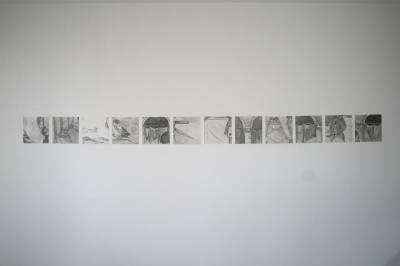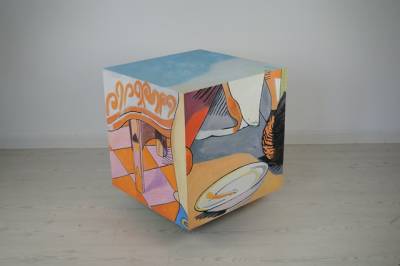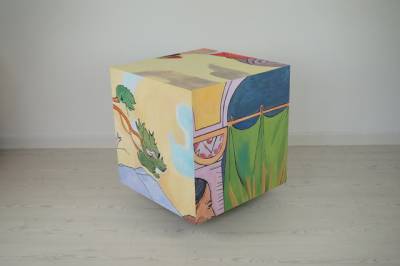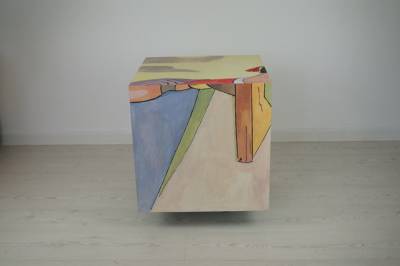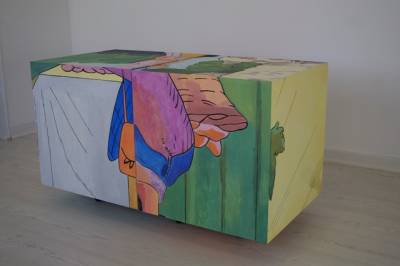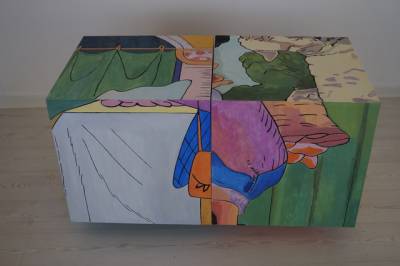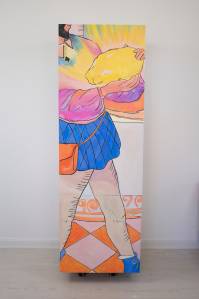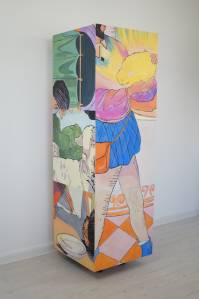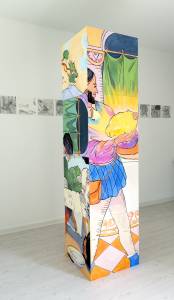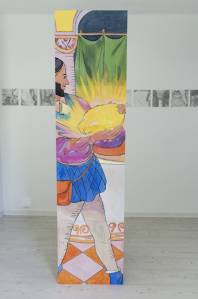Nina von Schmalensee
Nina von Schmalensee wurde 1967 geboren. Sie besuchte die Kunstschulen Nyckelvik und Idun Lovén und absolvierte danach das Royal University College of Fine Arts in Stockholm. Dort bildete sie sich auch in Graphik und Netzkunst weiter. 2003 besuchte sie Kurse in Photoshop, InDesign und Illustration der NTI School. Es folgten Weiterbildungen an der KPU Umeå Universität und in digitaler Photographie an der Södertöns Universität. Seit 1997 unterrichtet sie Kunst an verschiedenen Schulen und kuratiert Ausstellungen in Museen. Sie macht auch Radioprogramme und ist als Jurorin tätig. Ihr Werk ist in öffentlichten und privaten Sammlungen vertreten.
Nina von Schmalensee, No Deal
Aufenthalt
01.01. - 28.03.2020
Kontakt
No Deal
Die Ausstellung «No Deal» der Künstlerin Nina von Schmalensee vom 21. 3. 2020 musste leider wegen des Coronavirus abgesagt werden.
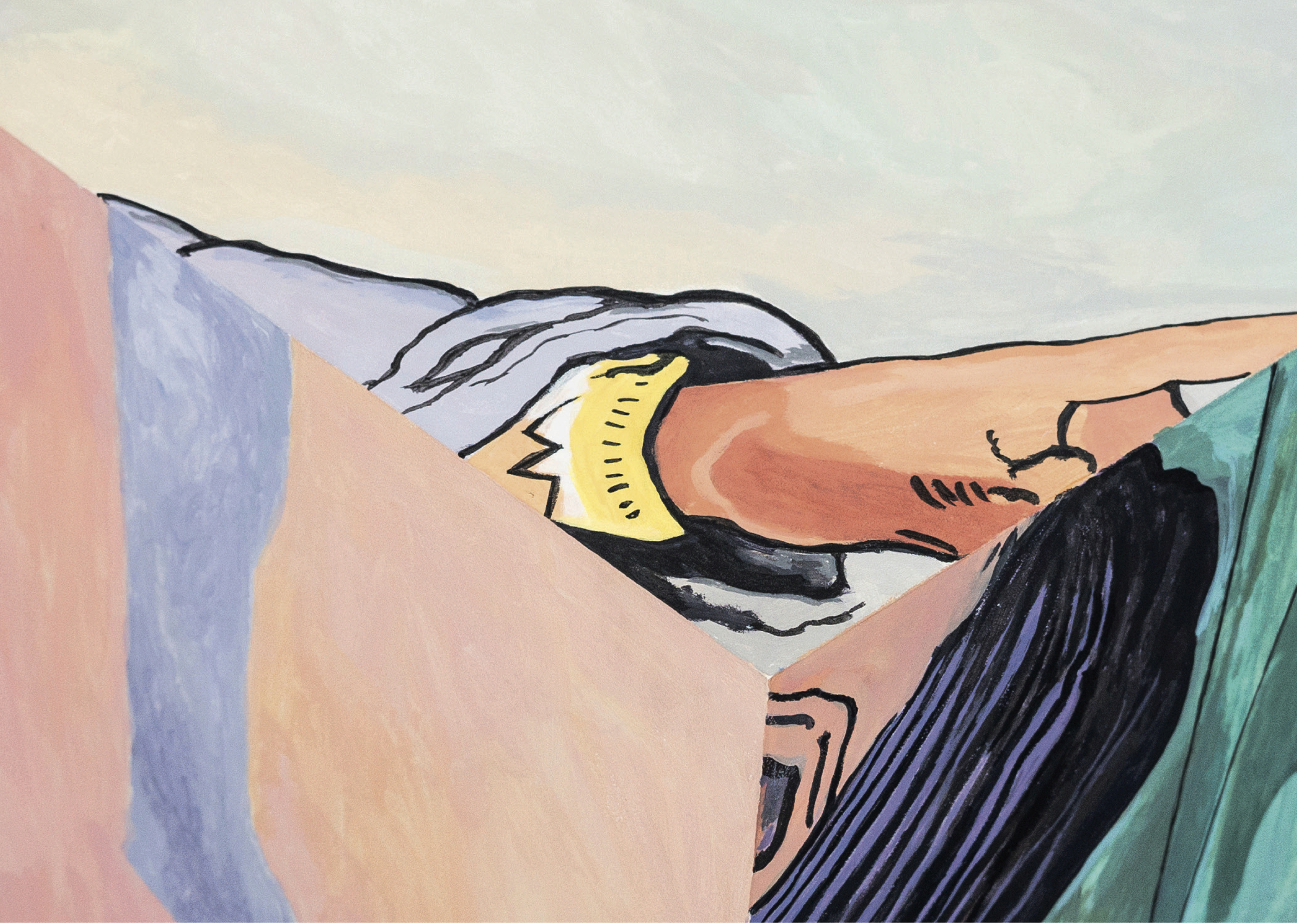
Nina von Schmalensee, No Deal
In 2014, in an exhibition held at Stene Projects Gallery in Stockholm, Nina von Schmalensee showed three depicted pictures from a dice puzzle in gouache, and four oil paintings where she mixed the pictures. This was a turning point in her painting, a more expressive way of working, in higher colours. As for the dice puzzle, the artist had found it in a second-hand shop in Southern Sweden. She knew it was from former Czechoslovakia, and she thought it might be from around 1950. 20 puzzle pieces which 6 sides each are all part of 6 separate images. She didn’t know then what the illustrations on the cubes were all about, but she thought it must be about a fairy tale, with some kind of a moral meaning. In only three months, she had worked on her first tackle with the motive, in a very quick process of painting. This first work stayed in her mind when it came to her residence in Bedigliora. She wanted to make bigger paintings, and she also wanted to see what happened if she put them together to dice again. So she made cube models painted in gouache with some of the elements, she printed them out and experimented different ways of rearranging them. Initially, she wanted to work on six cubes, but then she realised this might be too much. «Four cubes was what I thought I could handle – and that was exactly what I did during my time in the Casa Atelier.»
The artist thought she would have a very special time in Bedigliora – but it became even more special than she could have imagined. As the pandemic spread out to Europe and to the whole world, she stayed in an idyllic place and looked from there at the news: «I lived in a bubble, and the world around me was changing». She worked hard without having any distractions – and not wanting to have any. Putting the cubes together was a very complex work, which required a lot of thinking and trying: there were all those different elements, lines and colours. By placing one surface next to the other, the lines of one piece move into another picture. Suddenly, a pie turns into a brow, a mountain turns into a man’s breast. Different elements come together creating a new entity, as we can see in the motive chosen for the invitation card: it shows three surfaces of one cube meeting, forming together a picture, the three-dimensional turning into a two-dimensional piece of a different kind. Altogether the different combinations of cubes build more than 4500 different pictures. This is quite puzzling! The artist thought there must be one point at which all of the surfaces fit in one coherent picture. She chose the one of the man holding a gold nugget, because it seemed to her an essential one. So now, she can line the four cubes up on the floor – or she can put them one on top of the other, like a new Tower of Babel, both gigantic and fragile.
Nina von Schmalensee still didn’t recognise the story told by the pictures. Therefore, her first title for the exhibition was «No Clue». As she showed her work to her housemate, the Swiss artist Anna Isenschmid and her husband, they suggested the puzzle might show the Brother Grimm’s fairy tale «Hans in Luck». And that was it! Perhaps you remember the story:
Hans has been working hard for seven years. When he leaves, his master gives him a lump of gold. On his journey, Hans spots a rider on horseback and exchanges his lump of gold for the horse. The horse bolts and Hans gets bucked off, whereupon he meets a shepherd who convinces Hans to trade his horse for a cow. Disgruntled with the cow that doesn’t produce any milk, Hans meets a butcher who gives him a pig for the cow. Later on, he takes the countryman’s goose in exchange for his pig. At his next stop in a village, Hans meets scissors-grinder and happily exchanges the goose for the grindstone. When he stops at a fountain for a drink, the grindstone falls into the water and is lost. Hans is happy to be rid of the heavy grindstone and being free of all troubles.
What better story could there be for the artist’s stay in Bedigliora? Didn’t she go herself through a time in which she exchanged her family life in Sweden for a solitary, ascetic style of life? In addition to this, on the artistic level, she got «back to basics» by taking up drawing again. For every side of the cube, she made a drawing, thus helping the viewer to enter her work by watching the whole series in a resting spot, without the shrill colours. «For those drawings, I just needed paper and pencil, nothing else. I experienced freedom and felt happy in the process.»
On the social level, weren’t we experiencing a reduction of our usual consumption, and a reflection on different, more existential values than economical ones? Of course, the tale of «Hans in Luck» has been read in very different ways: some think it makes fun of the young man who accepts all those «bad» deals – but others, on the contrary, evoke the fascinating discovery that getting rid of possessions can make you rich in other ways, can make you free. In this context, the artist chose her new title «No Deal».
In a children’s puzzle, the dice are meant to fit all together with every side – in the artist’s work, however, there remains just one fitting picture to show the possibility of a former unity, whereas the other sides combine without an iconic coherence. In a game of chance, the dice are a symbol of coincidence. The artist’s rearrangement of the dice may also be seen upon as a new view of the world falling into pieces, where its remaining intact is just one possibility among others.
So, in this artistic project, Nina von Schmalensee throws the dice and lines up drawings, combines high colours and shapes, gets surfaces to meet, and thus creates an interesting mix of different languages: the black lines and coloured shapes recall pop art, the illustrations the former children’s book, while the technique reflects her training as a classical painter. Fragments assemble different entities and combine them for different levels of reality. We can look at this work in a political, in a psychological or in a philosophical way. We can think of various stories to tell, but we can also appreciate in the first place its aesthetic quality: putting different elements together, like a poet does with his or her words, Nina von Schmalensee sets free the bewilderment needed in the process that leads to new meanings.
Ruth Gantert
